
The natural world is filled with charlatans and impostors. There are several creatures in the wild that disguise themselves as something they are not. In scientific terms, this process is called biological mimicry, where one species evolves to resemble another for a variety of reasons. In fact, some animals even adopt the behavior and mannerisms of another for their own benefits. The resemblance is so good at times that it becomes almost impossible to tell them apart.
Biological mimicry is mostly done out of the need for survival or to avoid predators. Here, we look at some truly extraordinary cases of biological mimicry from the natural world.
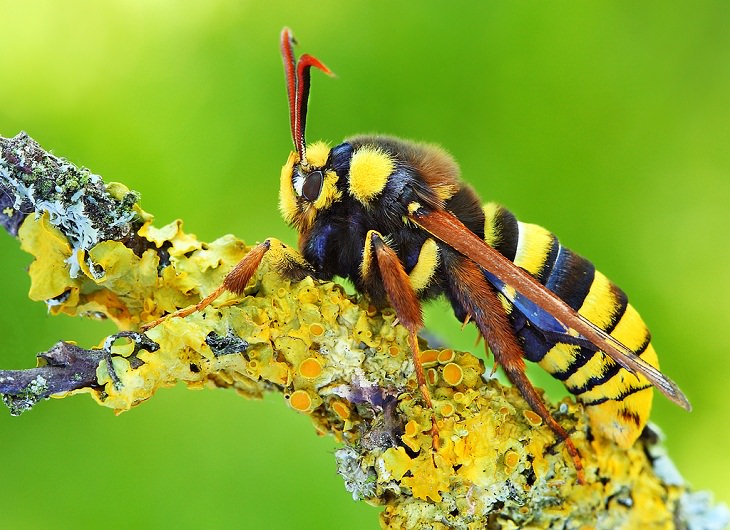
Image source - Lukas Jonaitis/Wikimedia Commons
The Hornet Moth (Sesia apiformis) is not your average little moth. There are many species from the Sesia genus that have evolved over centuries to mimic hornets and Sesia apiformis is one of them. The hornet moth, as the name suggests, is actually a copycat moth. It adopts the look and behavior of hornets for survival purposes.
The large bulky moth has the distinctive yellow and black markings of a hornet, has a similar wingspan and is almost the same size. Furthermore, it even mimics the hornet’s ‘jerky flight’ whenever it is disturbed or threatened.
There are, however, a few differences between a hornet and a hornet moth. This copycat moth is yellower than the hornet and doesn’t have a waist. Also, a hornet moth’s wings are transparent but can only be seen when it’s in flight.
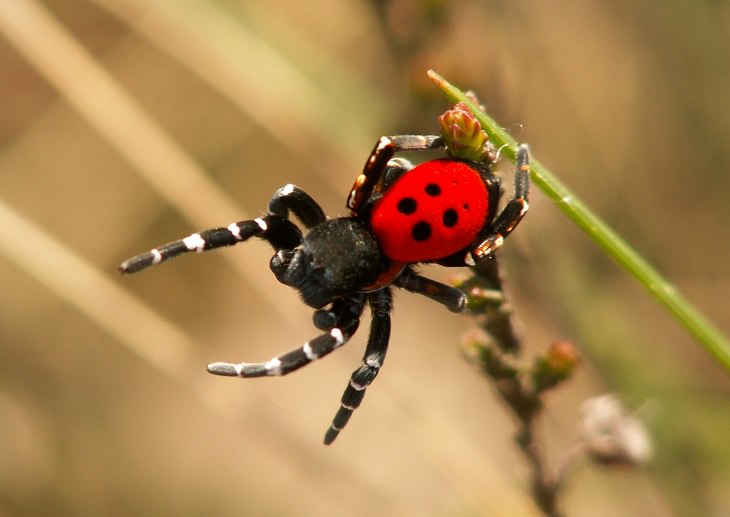
Image source - Viridiflavus/Wikimedia Commons
A lot of us have read about ladybird beetles when we were little. The cute little bugs have attractive color patterns of black and red and are one of the most popular characters of the insect world. But did you know that these ladybirds are so popular that there are spiders that are named after them?
Ladybird Spiders (Eresus sandaliatus) belong to the genus Paraplectana (Asian and African orb-weaver spiders). This group of spiders has developed and evolved over time to resemble ladybirds. But why ladybirds?
Not many know that ladybirds contain toxic and foul-tasting alkaloids. When crushed, their skin emits a very strong and distasteful odor that lingers for a long time. This makes predators learn to recognize and avoid them. The ladybird spiders have emulated the ladybird’s skin patterns to help repel predatory birds in the wild that might confuse them for the bug.
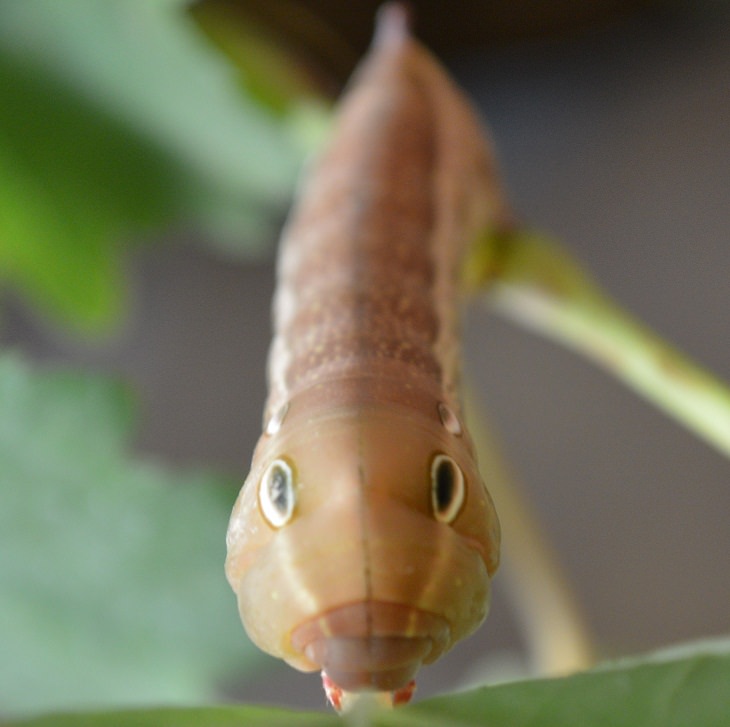
Image source - Ilya Carey/Wikimedia Commons
When you first lay eyes on it, you are certain to feel that you have come across a tiny little snake. They are not, though. Hemeroplanes triptolemus, or a hawk-moth, is a harmless little caterpillar with incredible camouflage skills. This fascinating creature possesses a great disguising ability to transform itself into a small snake to ward off potential predators.
The hawk moth is native to the jungles of the Amazon, and ever since it has been discovered, it has been nicknamed "snake mimic caterpillar". When disturbed or threatened, this caterpillar withdraws its legs and expands its first body segments in such a way that it resembles a snakehead with black eyes.
This isn’t all. The moth also mimics the curves, scales, and eyes of a snake, and it is so convincing that even human eyes can be easily deceived. Birds or animals who might have been attempting to hunt this caterpillar down will surely think twice once it transforms itself into a poisonous snake lookalike.
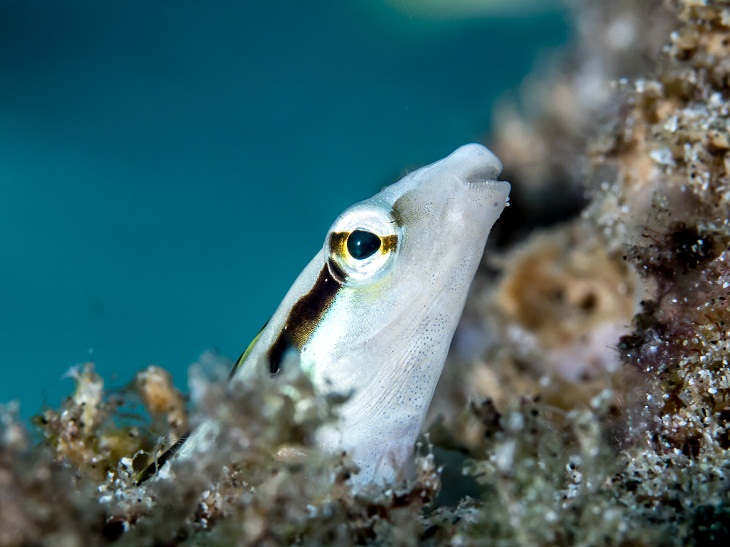
Image source - Rickard Zerpe/Wikimedia Commons
The false cleanerfish (Aspidontus taeniatus) gets its unique name because it mimics the similarly colored species of Blue Streak Cleaner Wrasse (Labroides dimidiatus) through all stages of its life. This fish takes on the appearance of cleaner wrasse to avoid predation by those fish that do not prey on the other species.
The false cleanerfish are exceptionally good mimics and have evolved to look like the blue streak cleaner wrasse, both in terms of appearance and behavior. It even emulates the posing behavior of Labroides dimidiatus by performing the same dance it does to attract client fish. Both fish are so similar in appearance that it is difficult to tell the difference between them.
The false cleanerfish is often found running fake cleaner stations (spaces where animals get rid of parasites from their bodies with help from cleaner fish) just about a little distance away from the real ones of blue streak cleaner wrasse. It lures in an unsuspecting prey to its station, takes a chunk out of them, and then darts away.
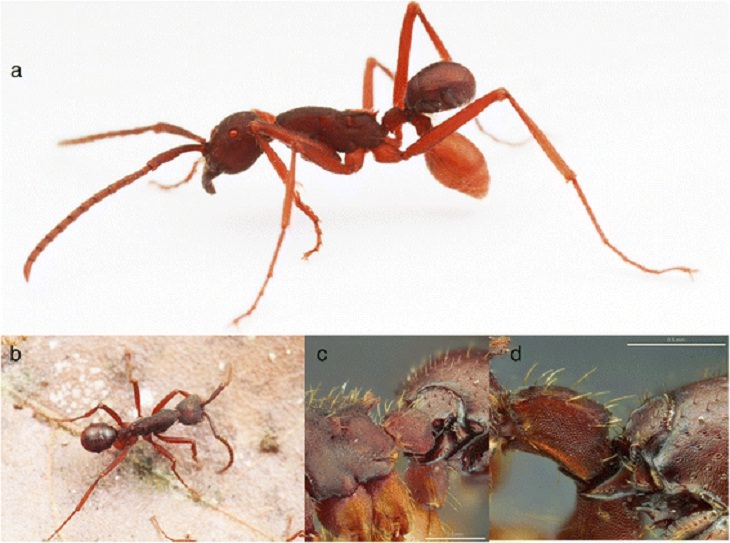
Image source - Christoph von Beeren and Alexey K. Tishechkin/Wikimedia Commons
First discovered in 2014, Nymphister kronaueri is a beetle species that was spotted hitchhiking on the back of army ants as a way of transportation. This beetle species use their strong mandibles to attach themselves tightly between the thorax and abdomen of army ants when they are moving to new nesting sites.
When attached to the ant, this beetle is quite difficult to detect because they are quite similar in size and shape to the host ants’ abdomen. Moreover, the outer shell of the Nymphister kronaueri is smooth and shiny, much like that of the army ants. Researchers believe that by imitating this part of the ant’s body, they are reducing their chances of recognition by the ants and thus travel on them undetected.